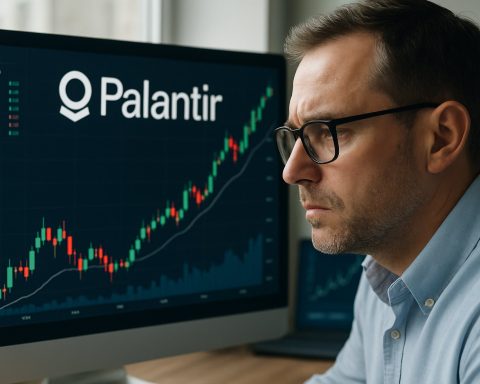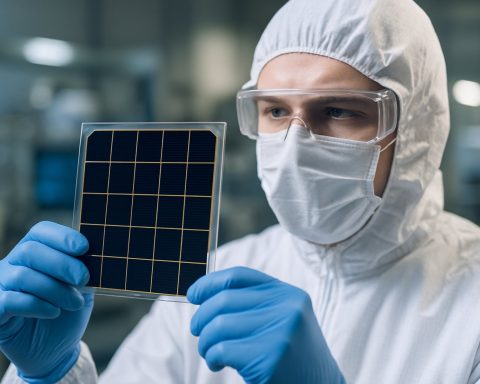- Porsche is pioneering electric vehicle battery recycling to create a sustainable, circular economy in the automotive industry.
- The company is extracting valuable raw materials, such as lithium, nickel, cobalt, and manganese, from used batteries for reuse in new electric vehicles.
- The process turns obsolete batteries into “black mass,” which contains essential metals for electric vehicle production.
- Porsche’s pilot project has already produced 65 tons of high-value materials, reducing dependence on volatile mining markets.
- European Union regulations are pushing automakers to recover up to 80% of lithium by 2031, increasing the importance of recycling initiatives.
- Currently, only 5% of EV batteries are recycled, indicating a significant opportunity for sustainability and industry change.
- Porsche is setting a new standard for corporate responsibility, aligning luxury with environmental stewardship.
In a groundbreaking endeavor that promises to redefine automotive sustainability, Porsche is diving headfirst into the complex world of electric vehicle battery recycling. The luxury automaker has embarked on a pioneering pilot project designed to siphon valuable raw materials from spent high-voltage batteries and regenerate them into sources of power for new electric vehicles. This bold initiative echoes through the corridors of the automotive industry, painting a vibrant picture of a circular economy that once seemed out of reach.
Picture this: deep within Porsche’s state-of-the-art facilities, machines roar to life, rendering obsolete batteries into a coarse mixture known as “black mass.” This unassuming dust contains a trove of treasures—lithium, nickel, cobalt, and manganese—metals as precious to the electric future as oil has been to the past. Each fragment of shredded battery tells a tale of potential rebirth, promising to fuel a new generation of electric Porsches that glide silently across the tarmac.
The alchemy doesn’t stop at black mass. Through meticulous separation processes, these raw materials emerge purified and ready to leap into new life, steering clear of the geopolitical quagmires that often swamp the mining markets. Porsche’s preliminary triumph is the production of 65 tons of this high-value mixture, each ounce a stepping stone towards greater independence from volatile supply chains.
As the European Union tightens its environmental girdle, mandating automakers to recover up to 80% of lithium by 2031, Porsche’s pursuit becomes not just progressive but necessary. The implications are vast—shouldering regulatory expectations while setting a new standard for corporate responsibility.
Yet, the broader picture reveals a stark reality: while it’s technically feasible to reclaim up to 95% of a battery’s material, a mere 5% of EV batteries are presently cycled back into production. This staggering disparity underscores a rich opportunity—the metaphorical goldmine yet untapped, poised to revolutionize the industry if only the right pathway can be carved.
Through this venture, Porsche isn’t merely tinkering with technology; it’s sculpting a blueprint, a beacon for other automakers who seek to align their practices with the urgent call of environmental stewardship. As companies worldwide search for sustainable solutions, Porsche leads by example, illuminating a path forward that marries luxury with responsibility, performance with preservation.
The road ahead is long and winding, but illuminated by initiatives like these, it gleams with promise—and Porsche is determined to drive every mile with innovation at the helm.
Can Porsche’s Battery Recycling Be the Game Changer for the Automotive Industry?
Insights into Porsche’s Battery Recycling Initiative
Porsche’s ambitious battery recycling initiative marks a significant advancement in the automotive industry’s march towards sustainability. As one of the key luxury brands embracing this path, Porsche is setting a standard by tackling the pressing challenge of recycling electric vehicle (EV) batteries. While the original sourcing may not have delved deeply into the technical specifics, there are numerous industry insights and related areas worth exploring.
How Porsche’s Recycling Process Works
The heart of Porsche’s recycling process lies in the transformation of spent EV batteries into “black mass,” a dense mixture of raw materials. Here’s a breakdown of how the process works:
1. Battery Collection: Used batteries from EVs are collected and transported to recycling facilities.
2. Shredding: The batteries are dismantled and shredded mechanically, resulting in a material mix dubbed “black mass.”
3. Material Separation: Advanced chemical and physical processes are utilized to separate lithium, nickel, cobalt, and manganese from the black mass.
4. Purification: The extracted elements undergo purification processes to ensure they meet standards for reuse in new battery production.
5. New Battery Production: The purified raw materials are reintegrated into the battery supply chain for the production of new EV batteries.
The Importance of Battery Recycling
Environmental Impact
Porsche’s initiative can significantly reduce the environmental impact associated with mining raw materials. Recycling helps conserve resources and minimizes ecological degradation, aligning with global sustainability targets.
Economic Implications
Reducing reliance on raw material imports by reclaiming valuable components can stabilize costs and supply chains, fostering economic resilience in a volatile market.
Compliance with Regulations
With the European Union setting stringent targets for materials recovery, Porsche’s strategy positions it well to meet upcoming regulatory requirements effortlessly.
Market Trends and Predictions
Battery recycling could become a central part of the automotive industry’s shift towards a circular economy, and market analysts predict a significant rise in the demand for recycling technologies. By 2030, the global market for EV battery recycling is expected to grow substantially, driven by regulations and the increasing adoption of electric vehicles.
Challenges and Limitations
While the potential is vast, less than 5% of EV batteries are currently recycled. The primary barriers include:
– Infrastructure Development: The need for extensive recycling facilities worldwide.
– Technology Evolution: Developing cost-effective technology for efficient material recovery.
– Logistics and Collection: Implementing effective systems for collecting and transporting spent batteries.
Practical Recommendations
1. Consumer Education: Raising awareness among EV owners about recycling options and their importance can boost participation.
2. Investment in Technology: Supporting innovation in recycling techniques will enhance efficiency and cost-effectiveness.
3. Collaboration: Automakers should partner with governments and recycling firms to create a cohesive battery ecosystem.
Related Industry Links
For further information on sustainable automotive practices, you can visit Porsche. Porsche’s official website offers more on their innovations and sustainability efforts.
Conclusion
Porsche’s groundbreaking pilot project in battery recycling is a monumental step forward, embracing both luxury and sustainability. By setting a precedent for the industry, Porsche not only enhances its environmental credibility but also underscores the feasibility and necessity of circular business models in the automotive sector. Readers looking to follow suit in sustainability can start with small changes—understand recycling practices, support brands that prioritize environmental responsibility, and stay informed about new technological advancements in the EV space.










